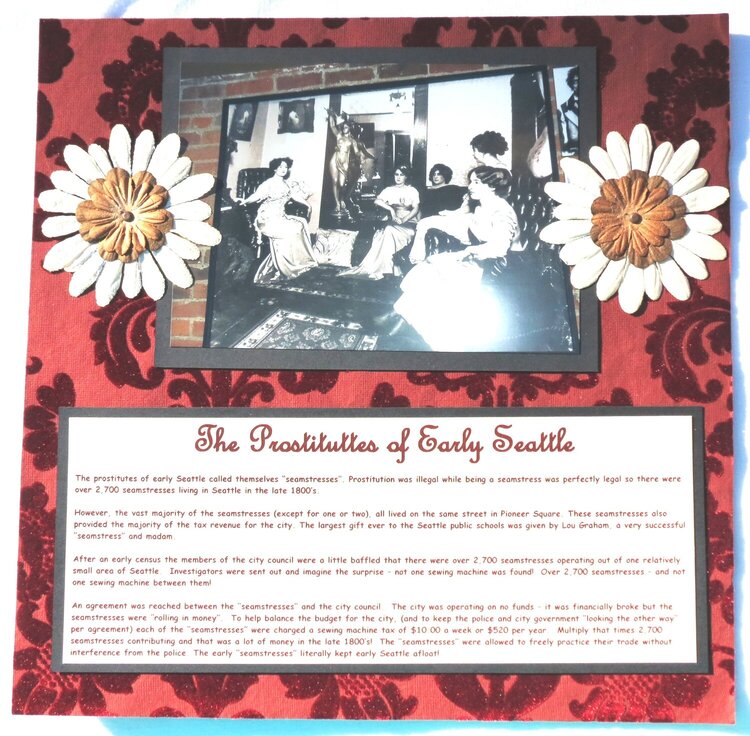EXTRA 11% OFF Orders $100+ With Code: THANKYOU


 Give a Cheer
Give a Cheer
The prostitutes of early Seattle called themselves “seamstresses”. Prostitution was illegal while being a seamstress was perfectly legal so there were over 2,700 seamstresses living in Seattle in the late 1800's.
However, the vast majority of the seamstresses (except for one or two), all lived on the same street in Pioneer Square. These seamstresses also provided the majority of the tax revenue for the city. The largest gift ever to the Seattle public schools was given by Lou Graham, a very successful “seamstress” and madam.
After an early census the members of the city council were a little baffled that there were over 2,700 seamstresses operating out of one relatively small area of Seattle. Investigators were sent out and imagine the surprise – not one sewing machine was found! Over 2,700 seamstresses – and not one sewing machine between them!
An agreement was reached between the “seamstresses” and the city council. The city was operating on no funds – it was financially broke but the seamstresses were “rolling in money”. To help balance the budget for the city, (and to keep the police and city government “looking the other way” per agreement) each of the “seamstresses” were charged a sewing machine tax of $10.00 a week or $520 per year. Multiply that times 2,700 seamstresses contributing and that was a lot of money in the late 1800's! The “seamstresses” were allowed to freely practice their trade without interference from the police. The early “seamstresses” literally kept early Seattle afloat!
No products have been added to this project.
Thanks for spreading positivity!
May 08, 2013
February 28, 2013
February 26, 2013
February 24, 2013
February 22, 2013
February 19, 2013
February 18, 2013
February 17, 2013
February 17, 2013
February 17, 2013
February 17, 2013
February 17, 2013
February 17, 2013
February 17, 2013
February 17, 2013